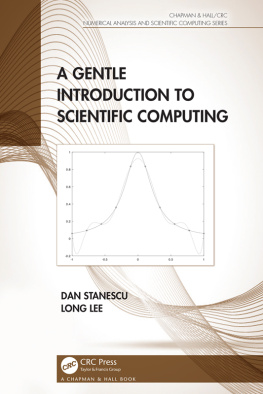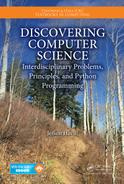Robert Sedgewick - Computer Science: An Interdisciplinary Approach
Here you can read online Robert Sedgewick - Computer Science: An Interdisciplinary Approach full text of the book (entire story) in english for free. Download pdf and epub, get meaning, cover and reviews about this ebook. year: 2016, publisher: Addison-Wesley Professional, genre: Computer. Description of the work, (preface) as well as reviews are available. Best literature library LitArk.com created for fans of good reading and offers a wide selection of genres:
Romance novel
Science fiction
Adventure
Detective
Science
History
Home and family
Prose
Art
Politics
Computer
Non-fiction
Religion
Business
Children
Humor
Choose a favorite category and find really read worthwhile books. Enjoy immersion in the world of imagination, feel the emotions of the characters or learn something new for yourself, make an fascinating discovery.

- Book:Computer Science: An Interdisciplinary Approach
- Author:
- Publisher:Addison-Wesley Professional
- Genre:
- Year:2016
- Rating:3 / 5
- Favourites:Add to favourites
- Your mark:
Computer Science: An Interdisciplinary Approach: summary, description and annotation
We offer to read an annotation, description, summary or preface (depends on what the author of the book "Computer Science: An Interdisciplinary Approach" wrote himself). If you haven't found the necessary information about the book — write in the comments, we will try to find it.
Robert Sedgewick and Kevin Waynes Computer Science: An Interdisciplinary Approach is the ideal modern introduction to computer science with Java programming for both students and professionals. Taking a broad, applications-based approach, Sedgewick and Wayne teach through important examples from science, mathematics, engineering, finance, and commercial computing.
The book demystifies computation, explains its intellectual underpinnings, and covers the essential elements of programming and computational problem solving in todays environments. The authors begin by introducing basic programming elements such as variables, conditionals, loops, arrays, and I/O. Next, they turn to functions, introducing key modular programming concepts, including components and reuse. They present a modern introduction to object-oriented programming, covering current programming paradigms and approaches to data abstraction.
Building on this foundation, Sedgewick and Wayne widen their focus to the broader discipline of computer science. They introduce classical sorting and searching algorithms, fundamental data structures and their application, and scientific techniques for assessing an implementations performance. Using abstract models, readers learn to answer basic questions about computation, gaining insight for practical application. Finally, the authors show how machine architecture links the theory of computing to real computers, and to the fields history and evolution.
For each concept, the authors present all the information readers need to build confidence, together with examples that solve intriguing problems. Each chapter contains question-and-answer sections, self-study drills, and challenging problems that demand creative solutions.
Companion web site (introcs.cs.princeton.edu/java) contains
- Extensive supplementary information, including suggested approaches to programming assignments, checklists, and FAQs
- Graphics and sound libraries
- Links to program code and test data
- Solutions to selected exercises
- Chapter summaries
- Detailed instructions for installing a Java programming environment
- Detailed problem sets and projects
Companion 20-part series of video lectures is available at informit.com/title/9780134493831
Robert Sedgewick: author's other books
Who wrote Computer Science: An Interdisciplinary Approach? Find out the surname, the name of the author of the book and a list of all author's works by series.












 o Paulo Sydney Hong Kong Seoul Singapore Taipei Tokyo
o Paulo Sydney Hong Kong Seoul Singapore Taipei Tokyo